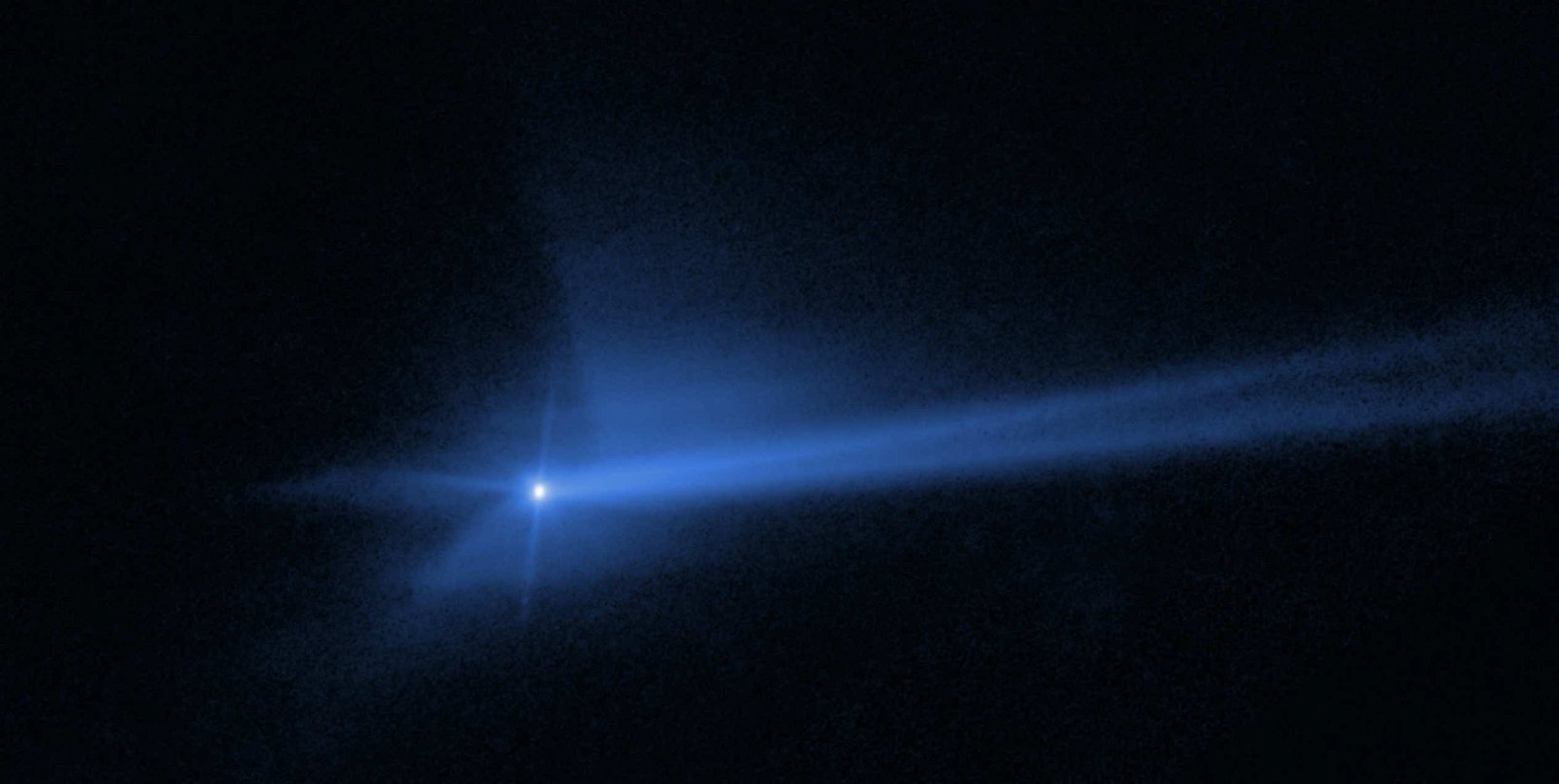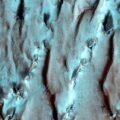NASA says the Hubble Space Telescope successfully captured images of the space agency’s DART spacecraft as it collided with asteroid Dimorphos last September.
Last year’s Double Asteroid Redirection Test was a space mission designed to explore whether a 1200-pound spacecraft could be used as a kinetic impactor to deflect an asteroid by transferring momentum during a planned collision.
The successful test was carried out on September 26, 2022, bearing promise for future efforts to protect Earth from any potentially deadly space objects that might be headed our way.
Now, NASA has revealed images of the historic impact between the DART spacecraft and the target asteroid, Dimorphos—actually a moon orbiting the larger asteroid Didymos—that occurred last year.
“Hubble’s time-lapse movie of the aftermath of DART’s collision reveals surprising and remarkable, hour-by-hour changes as dust and chunks of debris were flung into space,” read a NASA release describing the images.
Beginning a little less than an hour and a half prior to impact, the Hubble footage shows the formation of an ejecta cone, as well as debris captured within the asteroid’s orbit, as a “tail” of debris appears behind the asteroid resulting from pressure induced by sunlight.
“Smashing head on into the asteroid at 13,000 miles per hour, the DART impactor blasted over 1,000 tons of dust and rock off of the asteroid,” the NASA statement said.
Both Didymos and Dimorphos are visible in the footage within a centralized bright area, although the images collected by the telescope were not able to individually resolve the two asteroids in greater detail.
Optical “artifacts” produced by the telescope’s imaging system are also present in the footage, represented by long spikes extending away from the center of the brightened area at various later points in the film.
Astronomers calculate that the debris ejected from the asteroid’s impact with the DART spacecraft moves at more than four miles per hour, meaning that it moves quickly enough to escape the gravity of the space rock, resulting in strings of filaments protruding behind it.
The second of three stages identified in the imagery occurs about 17 minutes into the footage, where interactions between Didymos and Dimorphos result in distortions of the conical ejecta spray.
“The most prominent structures are rotating, pinwheel-shaped features,” read an update at the Hubble telescope website. “The pinwheel is tied to the gravitational pull of the companion asteroid, Didymos.”
NASA says the imagery provides useful information about the dispersal of debris produced during the collision, which the space agency says covered a far greater space than was recorded during primary assessments of the impact conducted by the LICIACube cubesat within minutes of the collision.
Jian-Yang Li, a scientist with the Tuscon, Arizona-based Planetary Science Institute and lead author of a new study co-authored with more than five dozen DART team members, called the footage “really surprising.”
“We’ve never witnessed an object collide with an asteroid in a binary asteroid system before in real time,” Li said in a statement.
“Too much stuff is going on here,” Li said, adding that understanding all the dynamics represented in the newly revealed Hubble footage is “going to take some time to figure out.”
Li and the team’s paper appeared in the journal Nature on March 1.
The Hubble footage capturing the after effects of the DART spacecraft’s impact with the Didymos system can be viewed here at the Hubble site.
Micah Hanks is the Editor-in-Chief and Co-Founder of The Debrief. He can be reached by email at micah@thedebrief.org. Follow his work at micahhanks.com and on Twitter: @MicahHanks.

